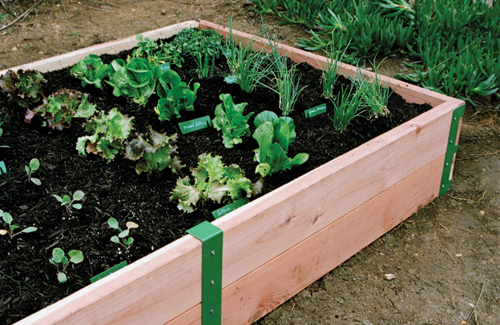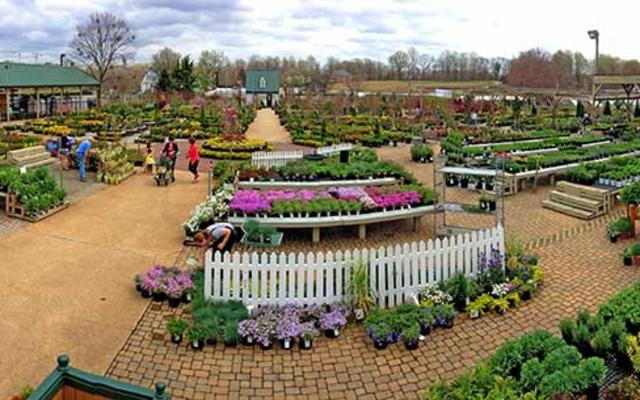Organic and Sustainable Practices for Homestead Gardening
Wiki Article
Discover Essential Tips for Effective Gardening Techniques and Practices
Gardening, commonly seen as a straightforward pastime, incorporates a series of strategies and practices that can substantially affect the outcome of your initiatives. By prioritizing important components such as dirt wellness, effective sprinkling strategies, and appropriate plant option, gardeners can create a flourishing ecological community that supports vibrant growth. In addition, understanding the subtleties of insect administration and seasonal upkeep can additionally improve productivity. Yet, several lovers ignore essential information that can make or damage their horticulture success-- exploring these overlooked aspects might disclose the secret to cultivating a growing yard.Understanding Soil Health And Wellness
Soil wellness is a fundamental aspect of successful gardening, as it directly influences plant development, nutrition availability, and community equilibrium. Healthy and balanced dirt is identified by a rich biodiversity of microbes, raw material, and a well balanced pH degree, which together produce an environment for plant advancement.To recognize soil health, one need to consider its physical, chemical, and biological buildings. The texture and structure of dirt affect its capability to maintain dampness and nutrients, while the chemical structure identifies the schedule of vital aspects like nitrogen, phosphorus, and potassium. Routine dirt screening is essential to examine these factors, allowing garden enthusiasts to make enlightened decisions relating to fertilizers and modifications.
Furthermore, advertising biological task within the dirt is important for keeping its health. Practices such as composting, plant rotation, and the usage of cover plants can improve microbial variety, enhance nutrient cycling, and minimize dirt disintegration. By focusing on soil health, gardeners not only maximize plant development however additionally contribute to a sustainable ecological community, guaranteeing that their horticulture techniques are resistant and eco liable with time.
Reliable Watering Techniques
Ensuring that plants get the ideal quantity of water is vital for their wellness and development, specifically when paired with a solid foundation of dirt wellness (Homestead Gardening). Efficient sprinkling strategies can substantially impact plant vigor, minimizing water wastage and promoting optimal advancementOne basic method is deep watering, which urges roots to grow much deeper into the dirt, improving dry spell resistance. This method usually involves sprinkling less regularly however in bigger amounts, allowing dampness to permeate the origin zone extensively. Timing is likewise essential; early morning is the excellent time to water, as it lessens evaporation and permits foliage to completely dry throughout the day, lowering illness risks.
Additionally, using compost can help preserve dirt wetness and regulate temperature level, more helping efficient sprinkling methods. Using a drip irrigation system can also give targeted wetness straight to the roots, ensuring that water gets to where it's most needed while preserving resources.
Keeping track of rains and soil moisture degrees can guide modifications in your watering schedule, guaranteeing plants get regular hydration without over-saturation. By adopting these efficient sprinkling techniques, gardeners can promote a growing environment for their plants to thrive.
Plant Option and Placement
Exactly how can the right plant selection and critical placement transform a yard right into a flourishing environment? The synergy between plant ranges and their placement is vital for creating a dynamic garden. When choosing plants, consider elements such as environment, soil type, and sunshine direct exposure. Indigenous species are usually the very best choice as they are adapted to local conditions and require less maintenance.Strategic placement entails setting up plants according to their growth routines and demands. Taller plants ought to be placed at the rear of boundaries to avoid shielding shorter plants. In addition, grouping plants with similar water and light requirements can improve their growth and decrease competition for sources.
Integrating a diversity of plants not just includes aesthetic allure yet likewise promotes biodiversity, bring in valuable pests and pollinators. Think about the seasonal modifications in your garden; pick a mix of perennials, evergreens, and annuals to ensure year-round passion.
Finally, remember to assess the fully grown size of plants prior to planting to stay clear of overcrowding and ensure ample air circulation. Thoughtful plant option and calculated placement produce a harmonious setting, allowing your yard to thrive while minimizing obstacles.
Bug and Disease Monitoring
Efficient bug and disease monitoring is necessary for maintaining a healthy and balanced yard community - Homestead Gardening. A proactive strategy, integrating social, biological, and chemical approaches, can considerably reduce the effect of parasites and illness on your plants
Organic controls, such as introducing valuable insects like ladybugs or predacious mites, can maintain pest populations in check without hurting the setting. In addition, maintaining plant wellness with proper watering, fertilization, and trimming will reinforce their durability versus diseases.
When intervention is required, go with targeted chemical treatments, guaranteeing to comply with application guidelines to minimize damage to non-target microorganisms. Constantly focus on lasting techniques, as they promote long-lasting yard health and wellness and eco-friendly equilibrium. By incorporating these strategies, gardeners can successfully handle bugs and diseases, click here now making certain growing plants and an effective yard.

Seasonal Upkeep Practices
In spring, focus on soil preparation by screening pH levels and adding needed amendments. Routinely check emerging plants for pests and diseases.As summer techniques, guarantee ample irrigation while keeping track of for indicators of stress or illness. Trim back overgrown plants to motivate air flow and minimize humidity around foliage. This practice not only enhances plant health and wellness however additionally advertises flowering and fruiting.
With the arrival of autumn, it's time to prepare for winter. Clean up fallen leaves and debris to avoid insect infestations, and think about growing cover crops to enhance dirt health and wellness. This season is additionally ideal for splitting perennials and growing spring-flowering bulbs.
Conclusion
Successful gardening rest on the integration of audio practices in dirt health and wellness, watering, plant choice, insect administration, and seasonal maintenance. By focusing on soil testing and microbial variety, employing efficient watering strategies, and choosing suitable plants, garden enthusiasts can create growing communities. Additionally, aggressive insect monitoring and attentive seasonal maintenance add substantially to overall yard vigor. Embracing these strategies promotes a sustainable and productive gardening environment, guaranteeing thriving development and strength throughout the altering seasons.By focusing on crucial aspects such as soil wellness, efficient watering techniques, and ideal plant option, gardeners can develop a growing ecological community that sustains lively growth. By prioritizing dirt health and wellness, gardeners not only maximize plant development but also add to click to read more a sustainable ecological site here community, making sure that their gardening methods are ecologically responsible and resistant over time.
Taller plants ought to be placed at the back of borders to avoid shading much shorter plants. Tidy up dropped leaves and particles to stop pest invasions, and consider planting cover crops to improve soil wellness.Effective gardening hinges on the integration of audio techniques in dirt wellness, watering, plant selection, pest monitoring, and seasonal maintenance.
Report this wiki page